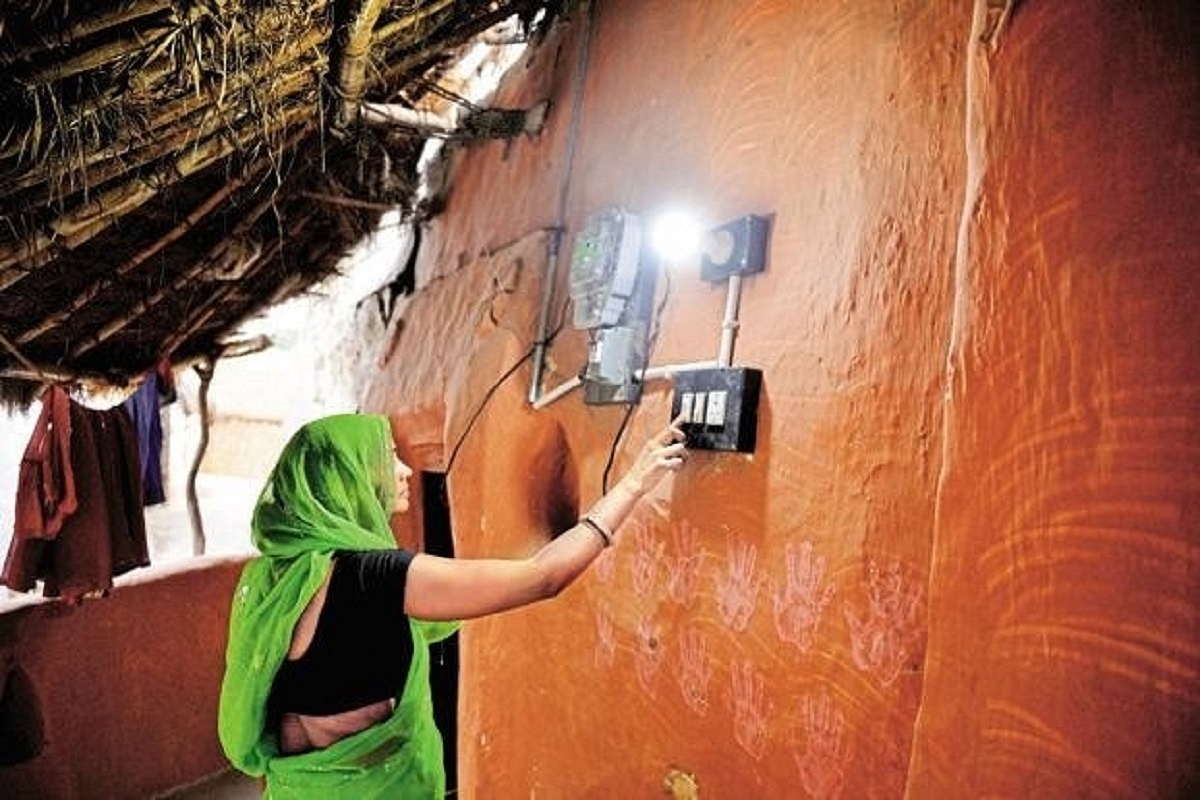Ideas
Taking Stock: Ministry Of Power To Commission Survey Of Flagship Electricity Schemes
- The survey will focus on the Pradhan Mantri Sahaj Bijli Har Ghar Yojana (SAUBHAGYA) and Deen Dayal Upadhyaya Gram Jyoti Yojana (DDUGJY) and capture the improvements made by these projects.

Rural electrification in India. (Pradeep Gaur/Mint via Getty Images)
The Ministry of Power is planning to commission a socio-economic survey of its marquee schemes aimed at universal access to electricity, as per a LiveMint report.
The survey will focus on the Pradhan Mantri Sahaj Bijli Har Ghar Yojana (SAUBHAGYA) and Deen Dayal Upadhyaya Gram Jyoti Yojana (DDUGJY) and capture the improvements made by these projects. The plan is to capture data to ascertain improvement in beneficiaries’ lives, said the report.
While DDUGJY has ensured village electrification, SAUBHAGYA resulted in the world’s largest household electrification drive, with the scheme funding the cost of last-mile connectivity to ‘willing households’.
The survey will be done by a professional agency and the monitoring will be done by the Union Power Ministry. Economists say there is a strong link between poverty eradication and the spread of electricity use.
Deen Dayal Upadhyaya Gram Jyoti Yojana
The flagship programme of the Ministry of Power was launched in December 2014 to provide access to electricity to all villages. Under DDUGJY, 18,374 inhabited un-electrified census villages were reported to be electrified from 2014-15 till 28 April 2018. A total of 12,768,620 households have been covered under DDUGJY.
Electricity, thus, reached all of India’s 5 97,464 census villages on 28 April 2018. In 1950, only 3,000 Indian villages had electricity.
Apart from the rural electrification, the scheme also entails separation of agriculture and non-agriculture feeders to facilitate electricity distribution companies (DISCOMS) in the judicious rostering of supply to agricultural and uninterrupted quality power supply to non-agricultural consumers. The scheme also involves strengthening and augmentation of sub transmission and distribution infrastructure in rural areas, including metering at all levels — distribution transformers/feeders/consumers.
Pradhan Mantri Sahaj Bijli Har Ghar Yojana (SAUBHAGYA)
While inching towards achieving 100 per cent village electrification, the government also focused on achieving electrification of all un-electrified households in the country. Taking into consideration various studies, it came to light that major barriers in household electrification were lack of awareness, cost of obtaining new connections, complexity and other logistics difficulties faced in obtaining connections.
Paying special attention to these requirements, government of India systematically designed and launched a scheme Pradhan Mantri Sahaj Bijli Har Ghar Yojana — SAUBHAGYA, in October 2017 focusing on last-mile connectivity and electricity connections to all the un-electrified households in the country.
The scheme aims to achieve universal household electrification by providing electricity connections to all un-electrified willing households in rural areas and all poor households in urban areas in the country by March 2019. Under the scheme, as on 31 March 2019, all households were reported electrified by the states, except 18,734 households in left wing extremist (LWE) affected areas of Chhattisgarh.
Rising Power Demand
This survey comes in the backdrop of India’s electricity demand picking up after a dip during the second Covid-19 wave, with the peak electricity demand met touching a record 210 gigawatts (GW) on 9 June.
The all-India electricity demand which was met clocked a record of 210,793 MW on 9 June 2022. The highest demand until last year was 200,570 MW, recorded on 07 July 2021. This year, the government is projecting the peak electricity demand to go up to 215,000 MW once monsoon sets in large parts, increasing humidity levels and usage of air-conditioners.
Support Swarajya's 50 Ground Reports Project & Sponsor A Story
Every general election Swarajya does a 50 ground reports project.
Aimed only at serious readers and those who appreciate the nuances of political undercurrents, the project provides a sense of India's electoral landscape. As you know, these reports are produced after considerable investment of travel, time and effort on the ground.
This time too we've kicked off the project in style and have covered over 30 constituencies already. If you're someone who appreciates such work and have enjoyed our coverage please consider sponsoring a ground report for just Rs 2999 to Rs 19,999 - it goes a long way in helping us produce more quality reportage.
You can also back this project by becoming a subscriber for as little as Rs 999 - so do click on this links and choose a plan that suits you and back us.
Click below to contribute.
Latest